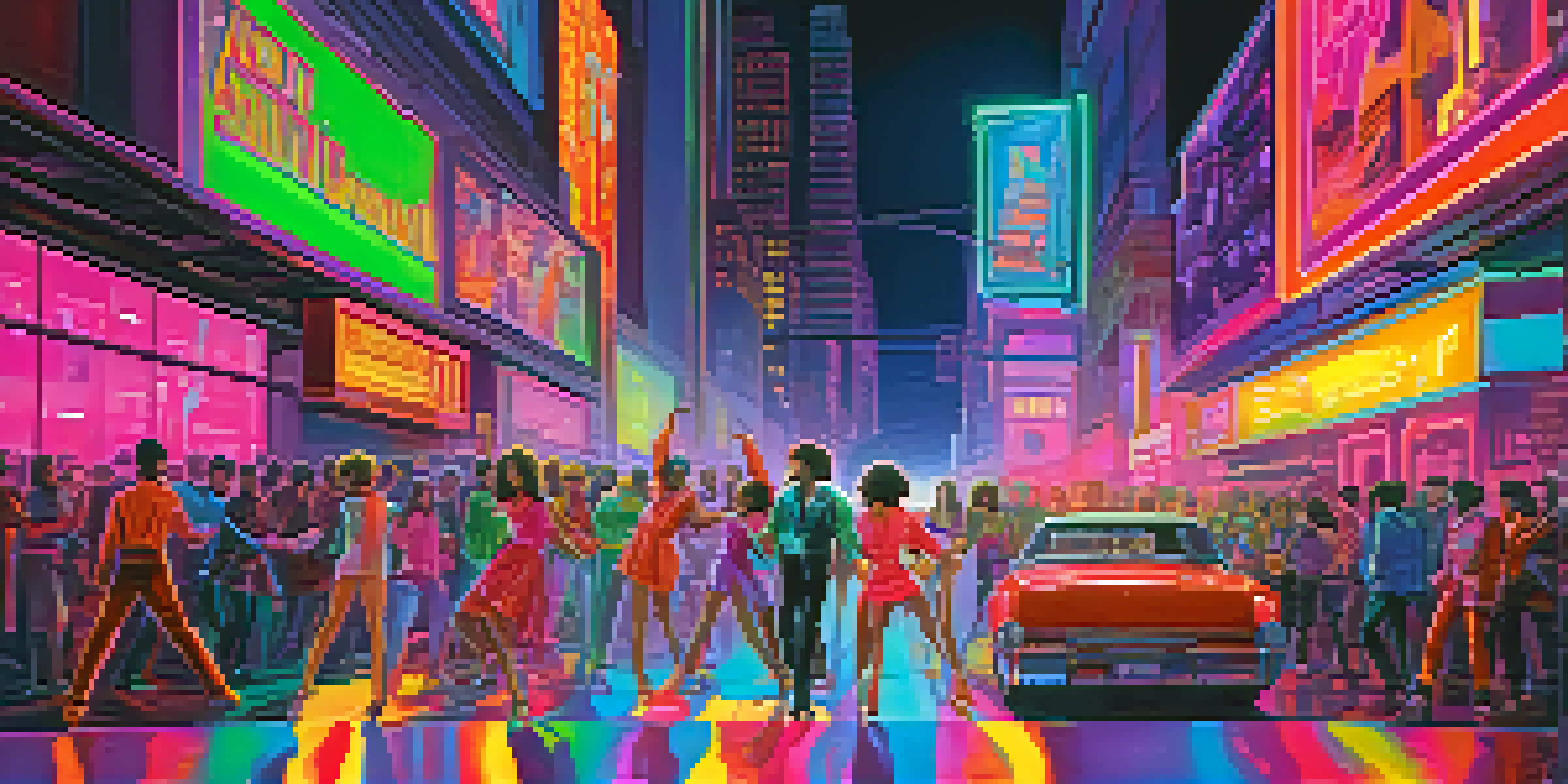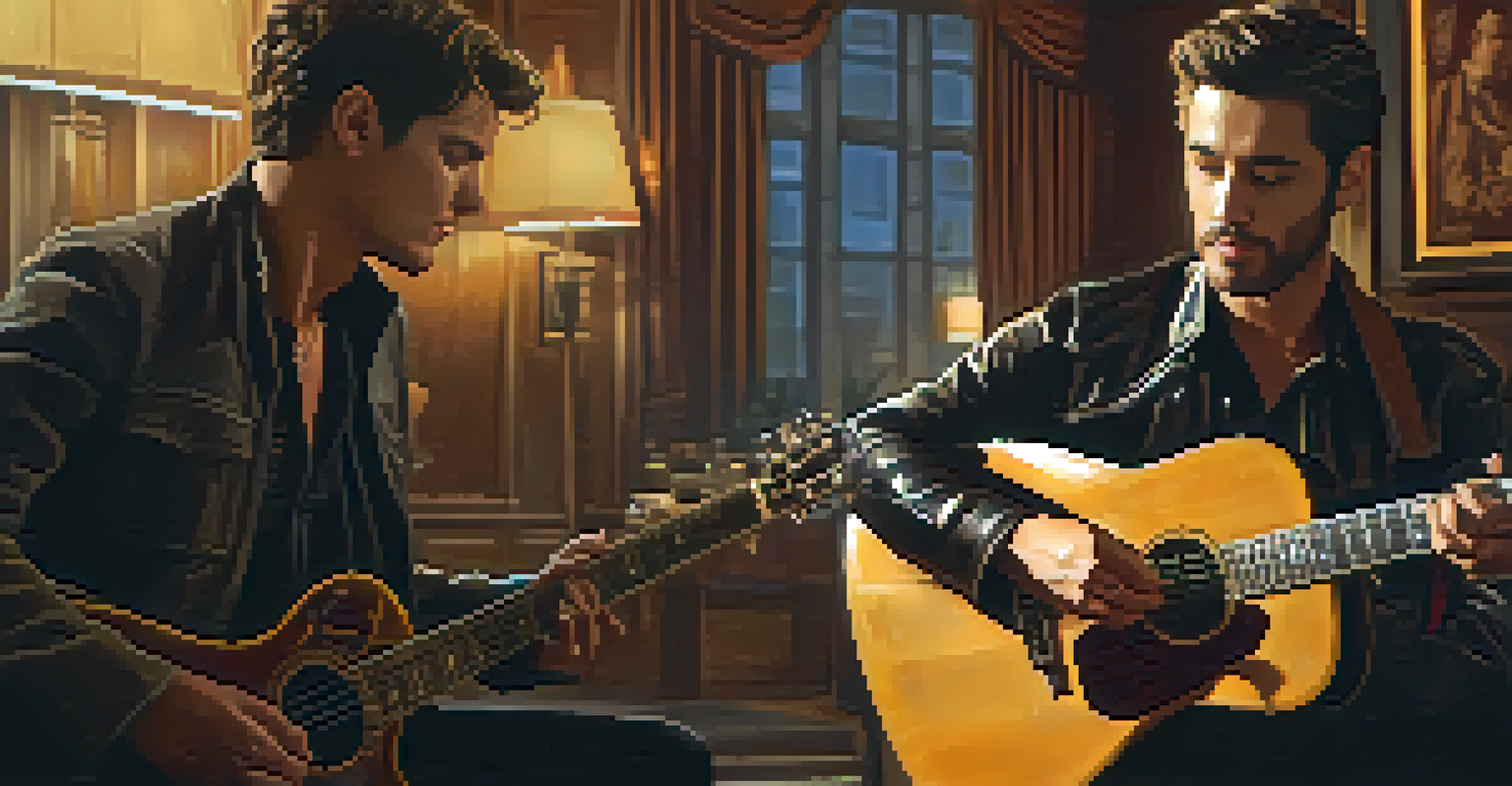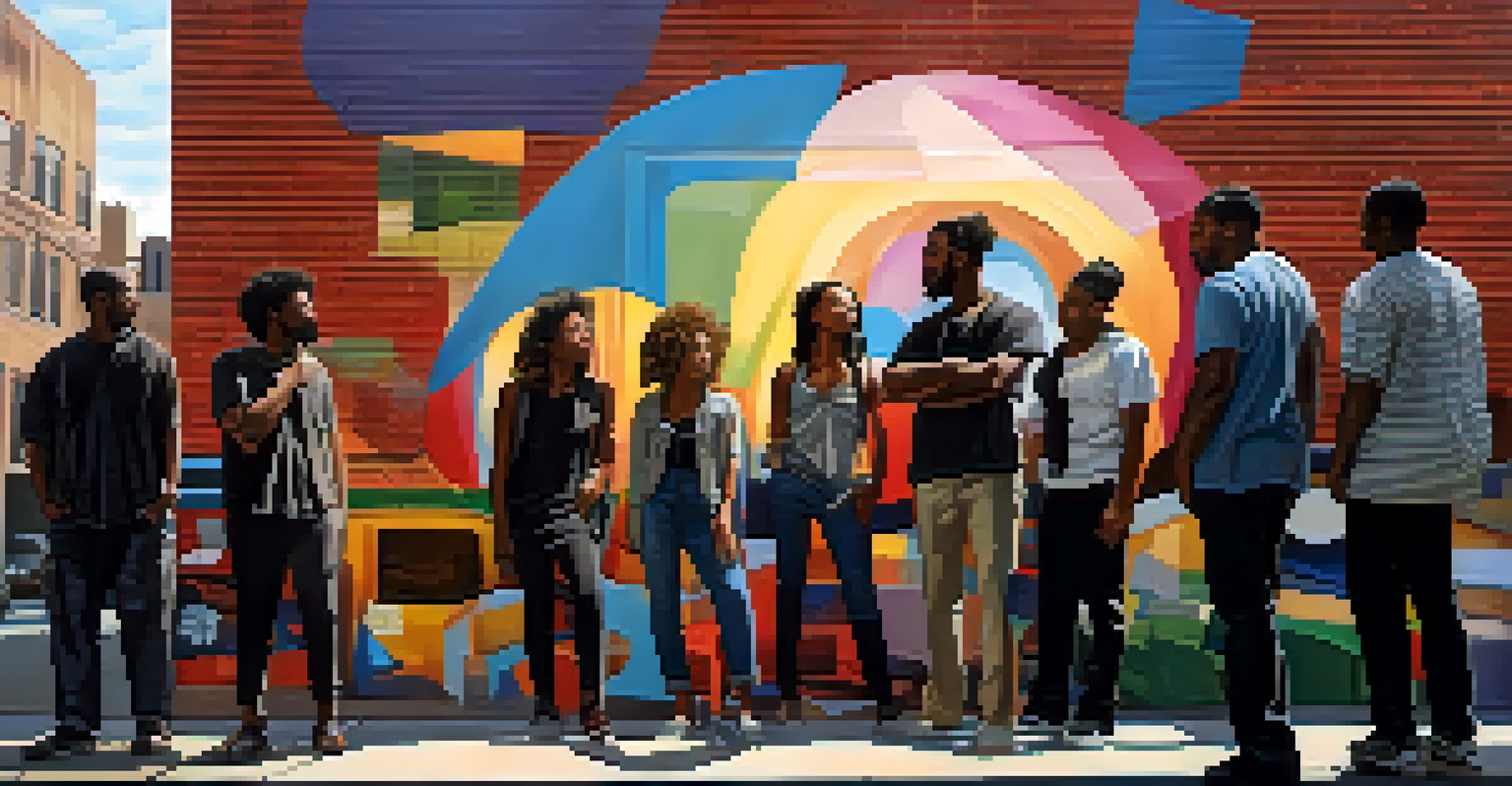Hollywood's Influence on Music Video Production Trends

The Historical Roots of Music Videos in Hollywood
Music videos have their origins in the 1960s, but Hollywood's influence truly began to flourish in the 1980s with the advent of MTV. At this time, music videos transitioned from simple performances to elaborate productions that told stories. Artists like Michael Jackson and Madonna began to set trends, blending cinematic techniques with pop music, ultimately changing how we consume music.
Music videos are a powerful medium for cultural commentary, particularly when influenced by Hollywood's narrative techniques.
These early music videos often featured high production values, cinematic storytelling, and innovative choreography, which echoed Hollywood's own filmmaking practices. For instance, Jackson's 'Thriller' is often credited as one of the first short films that blurred the lines between music and cinema. This shift not only captivated audiences but also set the stage for future artists to explore their creative visions.
As music videos became a platform for artistic expression, Hollywood's influence continued to grow, shaping the aesthetics and narratives that would define the genre. Artists quickly realized the potential of music videos as a marketing tool, often collaborating with renowned directors to enhance their visual storytelling. This partnership between music and film has led to numerous iconic moments in pop culture, illustrating the deep connection forged between the two industries.
Hollywood Directors Shaping Music Video Narratives
As music videos gained popularity, many Hollywood directors began to venture into this new territory, bringing their storytelling expertise along. Directors like David Fincher and Spike Jonze became staples in the music video scene, creating visually stunning and narratively complex pieces. Their involvement not only elevated the artistry of music videos but also introduced cinematic techniques that transformed the viewer's experience.

For example, Fincher's work on Madonna's 'Vogue' showcased innovative editing and choreography that turned the video into a cultural phenomenon. This collaboration allowed artists to push the boundaries of their creative expression, crafting narratives that resonated deeply with audiences. As a result, music videos evolved from simple promotional tools to short films that could stand alone as art.
Hollywood Shapes Music Video Art
The collaboration between Hollywood directors and musicians has elevated music videos into a powerful form of artistic storytelling.
By incorporating cinematic storytelling, directors have significantly enriched the music video landscape. These collaborations exemplify how Hollywood's influence has created a symbiotic relationship between music and film, leading to memorable visuals that enhance the overall message of the songs.
The Rise of Cinematic Quality in Music Videos
With Hollywood's influence, music videos have increasingly adopted high production values that parallel feature films. This shift is evident in the meticulous attention to detail, including set design, lighting, and cinematography. Artists and record labels are now willing to invest significantly in music video production, often resulting in breathtaking visuals that captivate viewers and elevate the music.
The relationship between Hollywood and music video production is a dynamic one, constantly evolving with the times.
For instance, videos like Beyoncé's 'Formation' and Drake's 'God's Plan' illustrate how cinematic techniques can be integrated into music videos to create powerful narratives. The use of diverse locations, intricate storylines, and high-quality production has made music videos a vital part of an artist's identity. This trend reflects a broader expectation for quality in all forms of media, pushing artists to meet the evolving standards.
Moreover, the ability to create visually stunning content has become essential in today’s digital age, where attention spans are shorter than ever. By leveraging Hollywood’s cinematic quality, music videos can leave a lasting impression, ensuring that artists remain relevant in a crowded marketplace.
Influence of Streaming Platforms on Music Video Trends
The rise of streaming platforms like YouTube and TikTok has dramatically changed the landscape of music video production. These platforms provide artists with direct access to their audience, allowing them to experiment with different styles and formats. As a result, music videos have become more diverse, incorporating elements of short-form content while still maintaining Hollywood's cinematic influence.
For instance, TikTok challenges have encouraged artists to create bite-sized music videos that are not only catchy but also visually engaging. This trend has led to a new wave of creativity as artists adapt their visuals to fit the quick consumption habits of today's audience. Hollywood's influence is evident as many creators adopt cinematic techniques to enhance these shorter formats, ensuring they remain impactful.
Streaming Platforms Drive Innovation
Streaming platforms like YouTube and TikTok have transformed music video production, encouraging diverse styles while integrating Hollywood's cinematic quality.
Streaming platforms have also democratized the music video landscape, allowing independent artists to showcase their work without the backing of major labels. This shift leads to a more varied tapestry of music video styles that reflect different cultures and artistic voices, all while still being influenced by Hollywood's cinematic flair.
Celebrity Collaborations and Their Impact on Styles
Celebrity collaborations have become a staple in the music video landscape, often leading to innovative styles and trends. When artists team up with Hollywood stars, the resulting music videos are often visually striking and packed with star power. These collaborations not only draw in fans from both industries but also create a buzz that can elevate the music itself.
Take, for example, the music video for 'Shallow' by Lady Gaga and Bradley Cooper. The video, which features intimate moments and dynamic performances, showcases how the blend of music and film can create something truly special. By leveraging Hollywood's storytelling techniques, artists can craft narratives that resonate deeply with their audience, making the music feel even more impactful.
As these collaborations continue to rise, we see a blending of styles that reflect the unique talents of both musicians and actors. This fusion of artistry not only shapes the look and feel of music videos but also reinforces Hollywood's enduring influence on the music industry.
Cultural Commentary Through Music Videos
Music videos have also become a powerful medium for cultural commentary, particularly when influenced by Hollywood's narrative techniques. Artists use their platforms to address social issues, making their music videos not just entertaining but also thought-provoking. This trend highlights the importance of storytelling in music, as artists strive to engage their audience on deeper levels.
For example, the music video for Childish Gambino's 'This Is America' employs striking visuals and symbolism to comment on gun violence and racism in America. By utilizing cinematic elements, the video prompts viewers to reflect on societal issues while enjoying the music. This approach showcases how the fusion of music and film can create a compelling narrative that resonates with audiences on multiple levels.
Cultural Commentary in Music Videos
Music videos are increasingly used as a medium for cultural commentary, utilizing Hollywood's narrative techniques to engage audiences on social issues.
As artists continue to leverage Hollywood's storytelling prowess, we can expect to see even more music videos that challenge the status quo. This evolution not only enriches the art form but also encourages conversations around important cultural topics, making music videos a vital part of the cultural landscape.
Future Trends: The Ongoing Influence of Hollywood
Looking ahead, the influence of Hollywood on music video production trends shows no signs of waning. As technology advances, we can expect even more innovative approaches to storytelling and visuals in music videos. Virtual reality (VR) and augmented reality (AR) are already starting to play a role, pushing the boundaries of how music is experienced and viewed.
Moreover, as streaming platforms continue to dominate the industry, artists will likely experiment with interactive content that engages viewers in new ways. This evolution will undoubtedly be influenced by Hollywood's cinematic techniques, ensuring that music videos remain at the forefront of artistic expression. The possibilities for creativity are endless, and we can expect to see exciting developments in the coming years.

Ultimately, the relationship between Hollywood and music video production is a dynamic one, constantly evolving with the times. As artists continue to push creative boundaries, Hollywood's influence will remain a pivotal factor in shaping the future of music videos, ensuring they remain a key part of our cultural landscape.